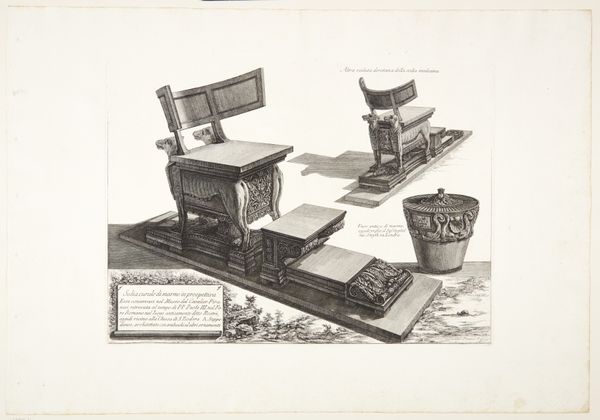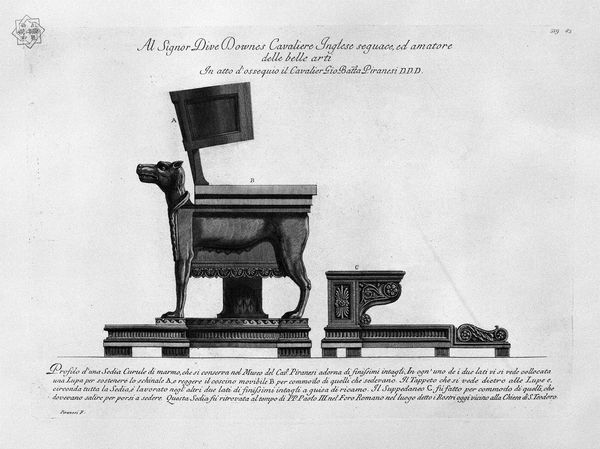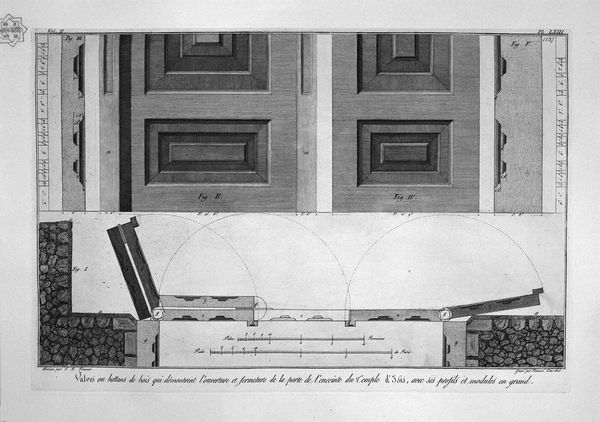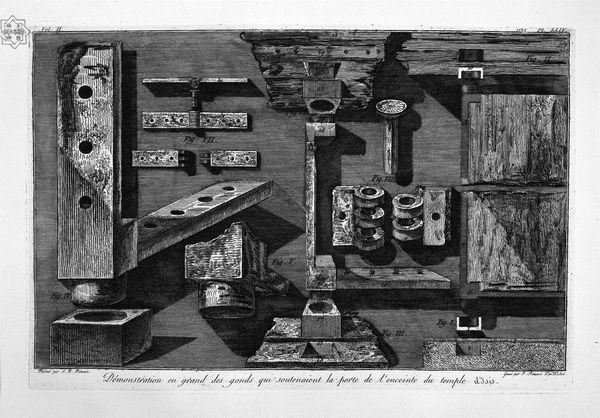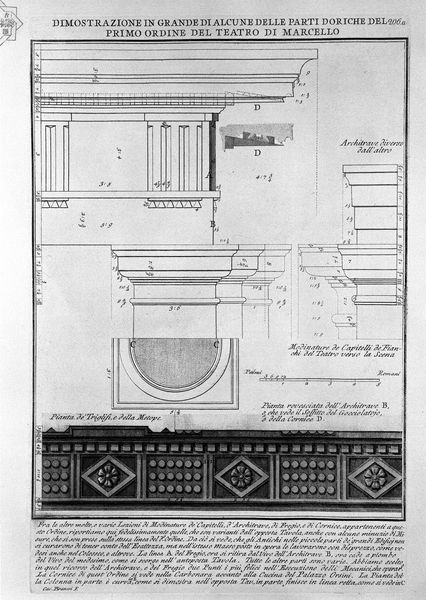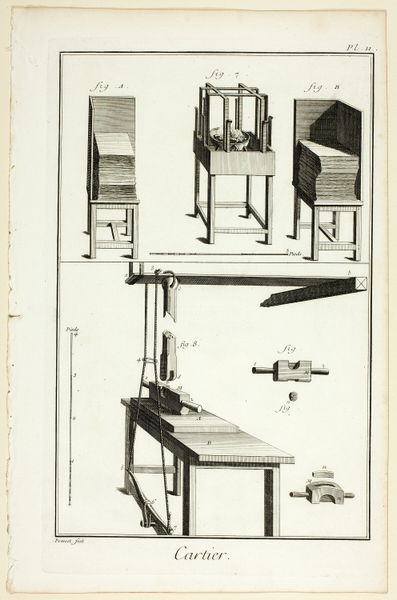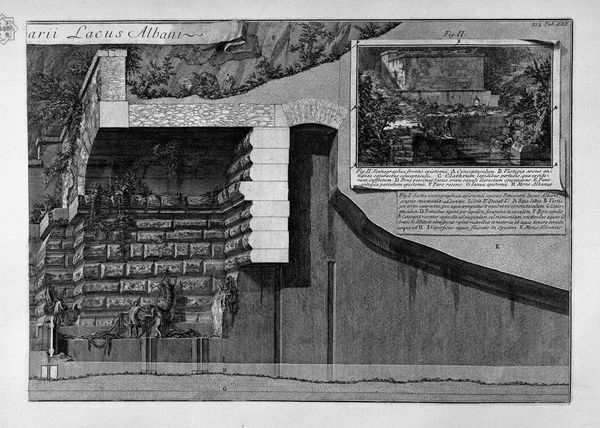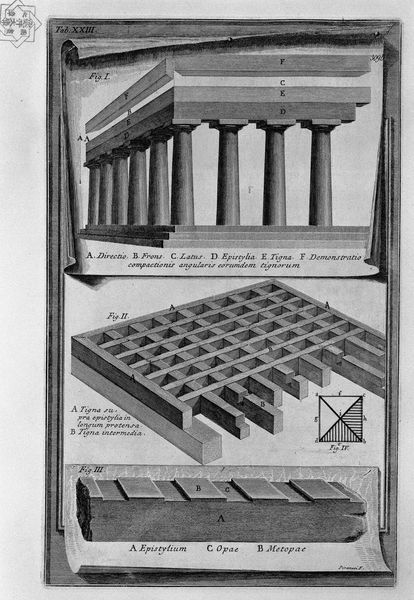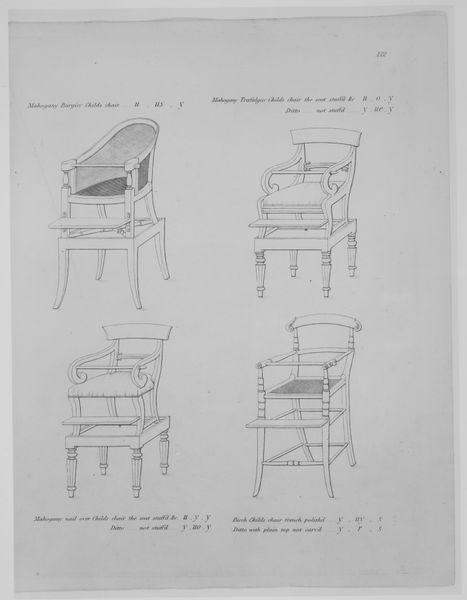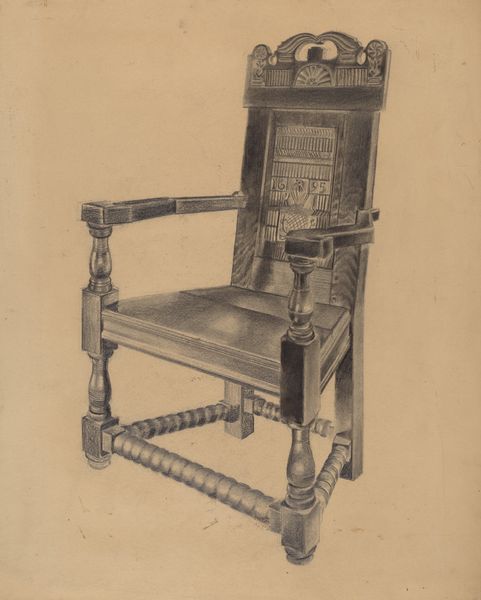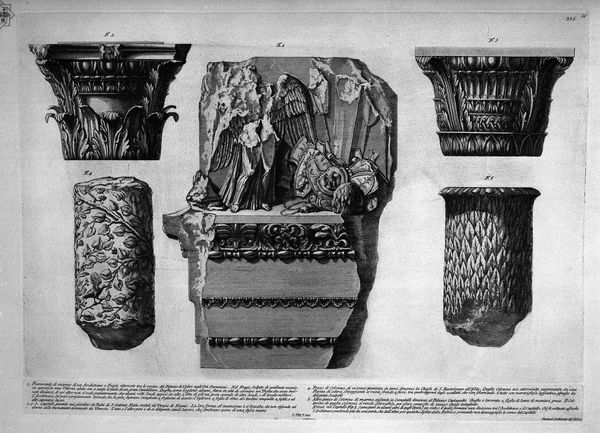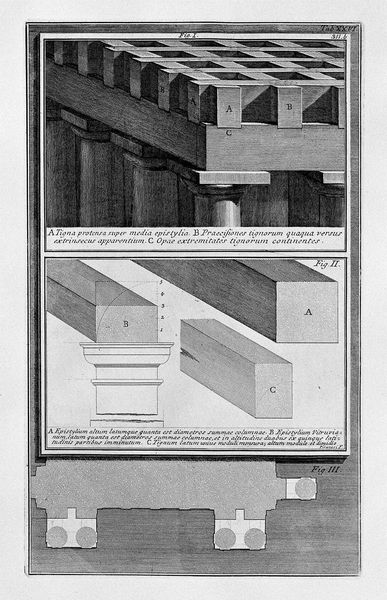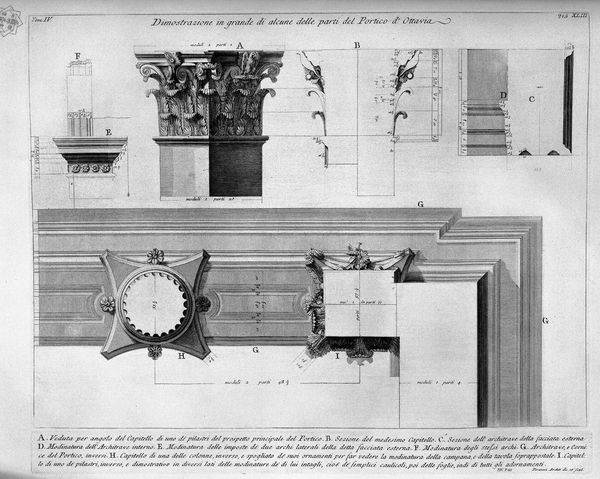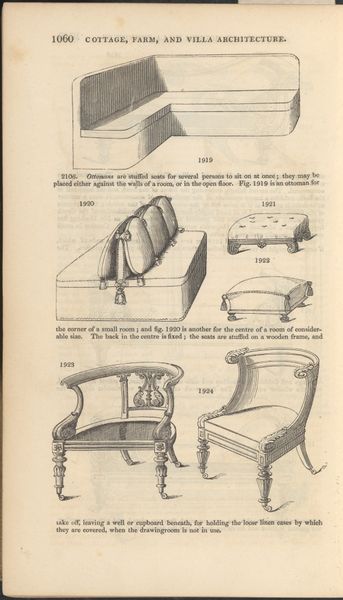
Curule chair of marble found at the Rostra in the Roman Forum, and a marble vase
0:00
0:00
drawing, print, etching, paper, marble, engraving, architecture
#
drawing
#
neoclacissism
# print
#
etching
#
pencil sketch
#
furniture
#
paper
#
architecture drawing
#
marble
#
heavy shading
#
engraving
#
architecture
Copyright: Public domain
Curator: This etching by Giovanni Battista Piranesi depicts a curule chair of marble discovered in the Roman Forum, alongside a marble vase. What are your initial thoughts on this pairing, and the overall scene represented? Editor: Stark, weighty, and quite... solid. I'm immediately drawn to the materiality—the chair and vase rendered so meticulously, you can almost feel the coolness of the marble. It evokes a sense of permanence, but also hints at the labor required to shape such monumental objects. Curator: It's intriguing to see Piranesi focusing on these specific objects within the broader context of Roman antiquity. This chair, the sedia curule, was a symbol of power and authority, reserved for high-ranking officials. Editor: Precisely. The emphasis on marble elevates its significance, reminding us that this isn't just functional furniture; it’s a symbol imbued with socio-political weight. We see both function and the intense work for decoration, those arabesques speak to intense, difficult labor. Curator: Piranesi’s choice to present it alongside a vase suggests a commentary on Roman life beyond just political power. What role do you think this depiction of the artifacts serve? Editor: By placing them together, he perhaps points towards the everyday use and display of power within the sphere of Roman life, indicating the ritual consumption linked to aristocracy. It hints at how material culture shaped social structures and even suggests a shared history embedded within both pieces. Curator: It highlights the intricate connections between art, power, and everyday life in ancient Rome and underscores Piranesi’s critical examination of these intersections, as presented to his contemporary audiences. Editor: Absolutely. Seeing how Piranesi rendered this image through etching, a craft itself that has history, connects him and his work to the long tradition of artisans he memorializes. The final prints sold allow people to access and appreciate Roman achievement. A nice touch. Curator: An insightful reflection indeed, reminding us that the meaning of art and design resides as much in its material composition as it does within its historical context. Editor: Yes, it is crucial to remember that these are the artifacts born of process, which continues through to Piranesi's treatment, to distribution.
Comments
No comments
Be the first to comment and join the conversation on the ultimate creative platform.
